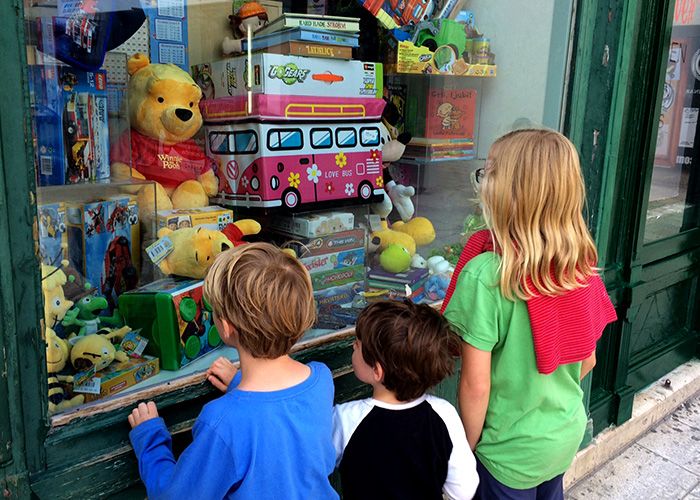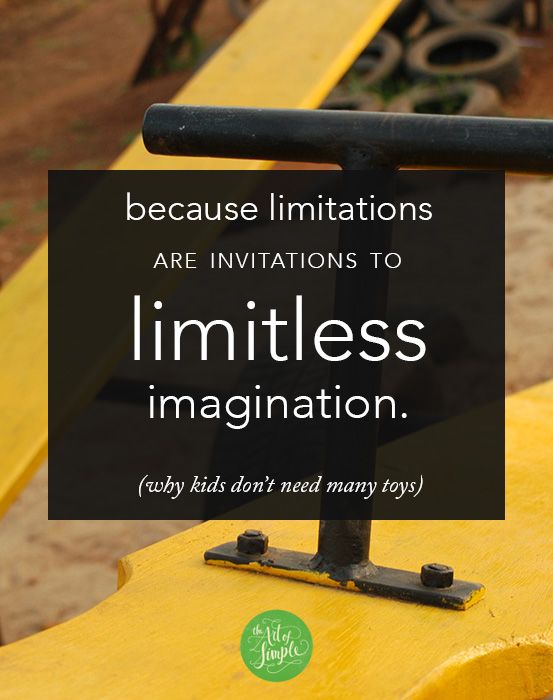We’ve been living out of backpacks for more than six months now, which means even though I often write about spring cleaning and decluttering this time of year, it’s a bit hard to write about the obvious nuts and bolts of home life from a personal perspective. And I prefer to write from a personal perspective.
So this year, I’m still writing about spring cleaning (last week’s was on beauty routines), but from the angle of someone who’s learning to live with less in a very real, albeit very unusual method. We’re living large (= the globe) by living small (= a family of five with backpacks).
Today, I thought we could talk about kids’ toys.
In the past, I typically pick a day or three a la my Organized Simplicity method, and I work through every square inch of our kids’ toys with a simple declutter-clean-organize routine. I ask, “Is this truly beautiful or useful to someone in the family?” (this quote is our guiding principle), and if it is, we keep it—so long as it has a definable home. If it’s not, then out it goes.
I’m still a believer in that simple method, but right now, there’s really nothing for us to declutter, other than a few random drawings on paper scraps, a couple dried up markers, and a plastic toy or two a kid somehow picked up from a restaurant. Or a rock or seashell. That’s it for us right now, literally.
All the other toys we have, the kids value as prized, prized possessions. Here’s what they currently have:
• LEGO (just simple bricks, no sets)
• blank notebooks for drawing
• markers, crayons, and pencils
• a couple matchbox cars for the boys
• a few card games (Spot It, UNO, Timeline, and basic playing cards)
• my daughter’s doll
• knitting needles and yarn
• Kindles (with books only—we like the Paperwhites)
The only time they ask for something else is either when we walk by a toy store or souvenir shop, or when they see a photo from their “real” life and suddenly remember a toy waiting for them in storage. Otherwise, they’ve been content with what they have.

Now, this doesn’t mean they’ve never complained about being bored on this trip, or that sometimes they wish we were done and they could go back to their rooms and toys and be regular kids. But on the whole, they’ve made do with just these toys, and imaginatively added whatever’s around them—leaves, rocks, dirt, water, guesthouse furniture and blankets, towels, tin foil, even food wrappers and containers. It’s been fun to watch.
Here’s what the kids are teaching me as I watch them play:
1. Limits are healthy.
All this is really the simple idea of lovely limitations—when you don’t have all the options you’d like, you make do with what you have. And as you make do, you discover that you don’t really miss those things you wish you had.
Limits foster creativity. Limits temper our spirit that cries out for more. Limits breed contentment.
2. As they get older, I’m still a big believer in open-ended toys.
I can deal with LEGO everywhere because they’re a never-ending source of imagination—they’re a spaceship, a castle, a village, a jungle, a robot, a thingamabob. Blank paper can be drawn on, you can scribble out stories and checklists and notes, you can fold them in to paper airplanes, you can create money and play store, you can make signs all over the house. Hooray for open-ended toys!
I’m a massive fan of toys that allow the child to play, not toys that play while the child watches, and thus is passively entertained (aka, most electronic toys). Open-ended toys mean infinite options—they’re more bang for your buck, they’re usually timeless (save them for your future grandkids!), they’re pleasing to multiple kids, and higher-quality ones will last much longer than their plastic, battery-operated counterparts.
3. It’s okay to (sometimes) want more.
I don’t really blame the kids when they pass a toy store and wish they had a New Thing. I do that, too, when I pass a shoe store or a market stall with 5 euro scarves. Admiring and desiring something beautiful isn’t necessarily a bad thing.
We have a finite amount in our bank account, which means very few new purchases as we travel. But I totally get why my 7-year-old son wants a Big Hero 6 action figure, and that doesn’t make him a greedy, ungrateful kid. He just likes it. And that’s okay—I don’t need to correct his desires, or constantly preach to him the gospel of minimalism. He can wish for it, and cross his fingers that he might get it one special day.
We can sometimes read too much into the basic human desire of loving beautiful things.
4. Kids really, really, really don’t need much.
When we return to our normal life in a few months, I hope we keep our lifestyle of minimal playthings. The kids have shown me true childlike contentment with little more than what can fit in a quart-sized bag, so even though we didn’t have a ton of toys back home to begin with, I plan to declutter even more, before we even bring it out of storage.
For over six months, they’ve really and truly been just fine with a smattering of toys. Maria Montessori was on to something when she observed children in povery—given nothing to play with, they’ll still play with the crumbs on the floor.

I’m grateful we can afford more than crumbs, but I’m actually doing my kids a disservice when I overload their senses with too many toys. Limitations are invitations to limitless imagination and creativity. And it’s not just with kids’ toys—I’m learning this with my own entertainment choices, too (more on this soon).
How have you learned this with the children in your own life? And what are your favorite open-ended playthings that stand the test of time?



